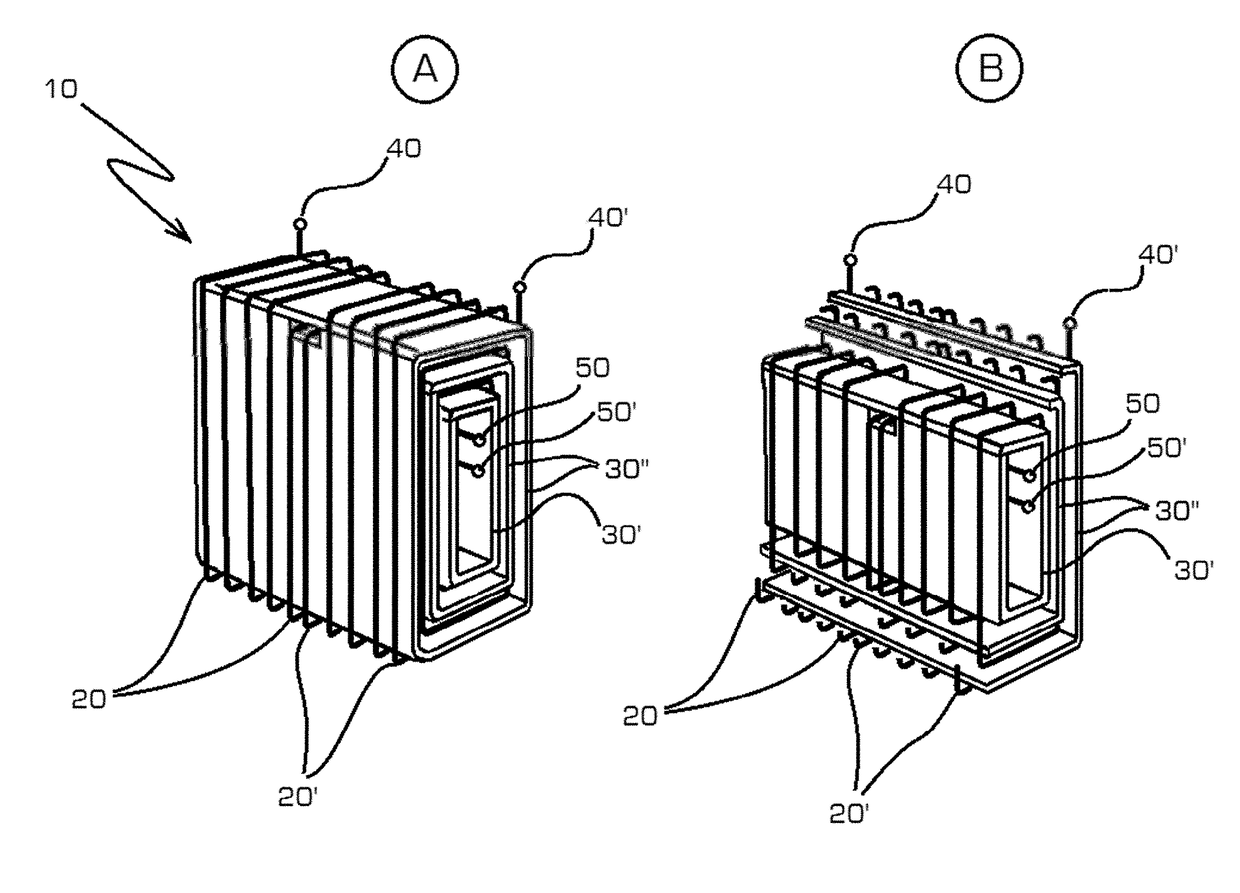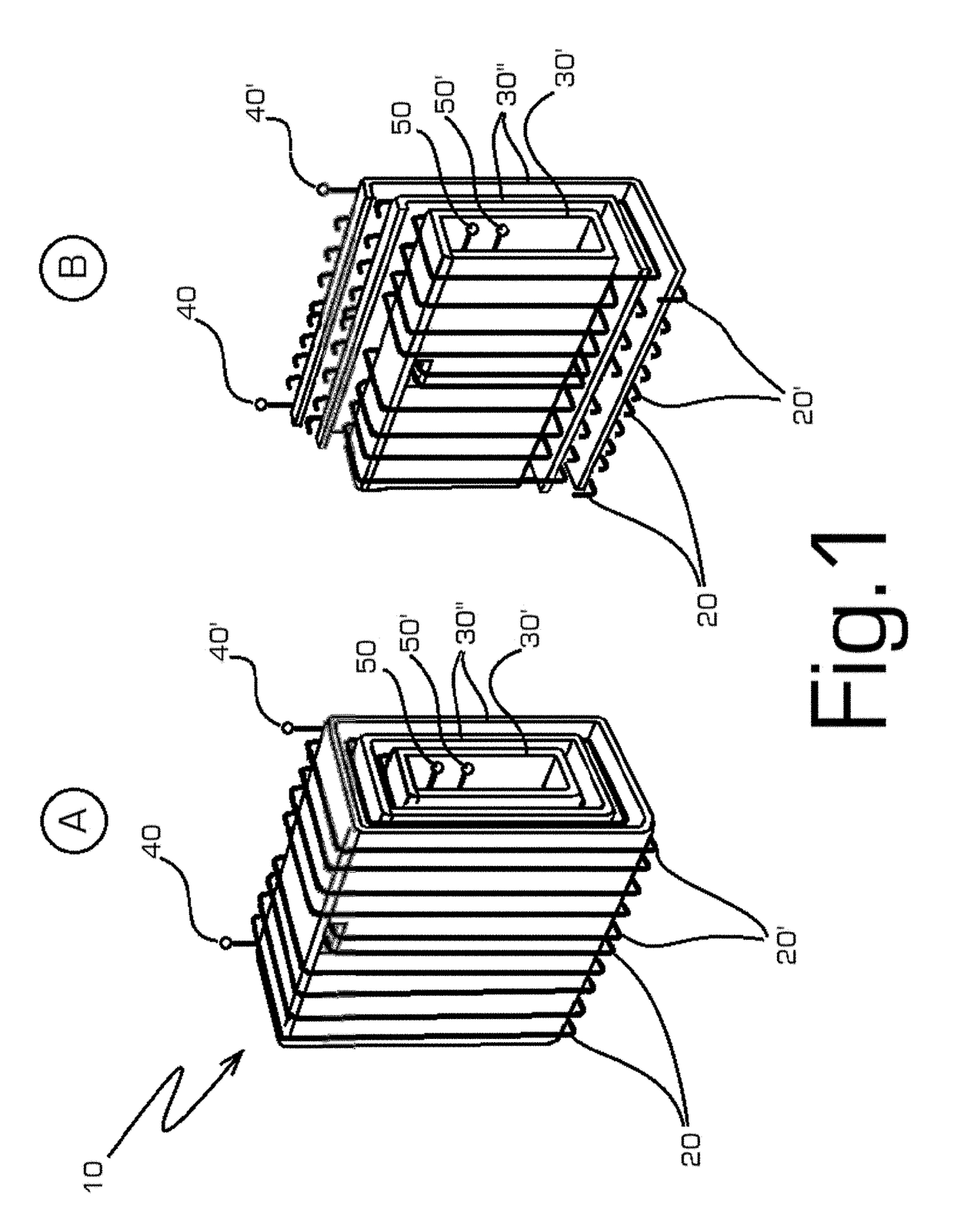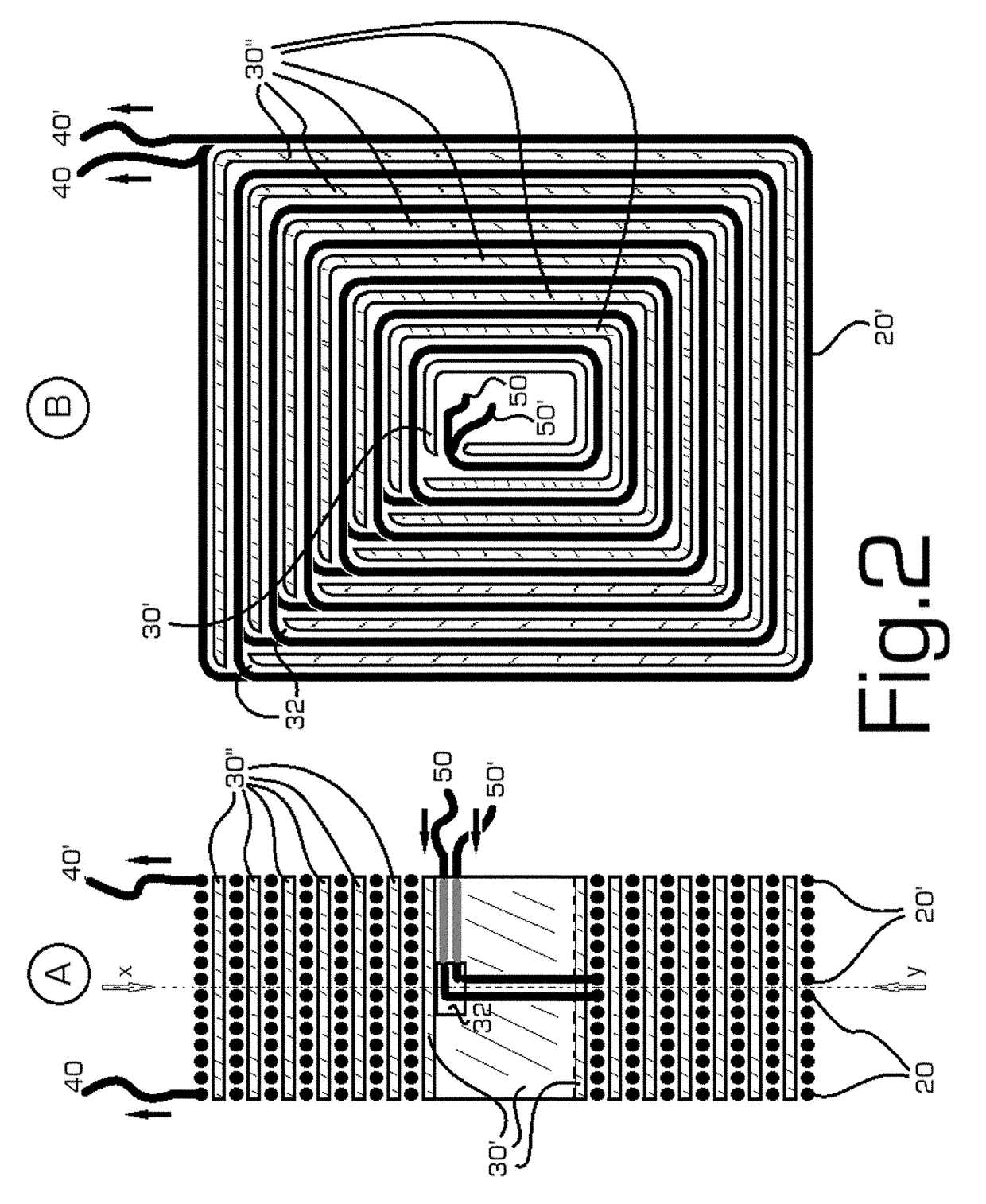However,
Sturgeon's magnets were weak because the uninsulated wire he used could only be wrapped in a single spaced out layer around the core, limiting the number of turns.
The prior art's typical
electromagnet approach and limitation includes field lines that encircle the wire windings but do not enter the core.
The above methods are inapplicable when most of the magnetic field path is outside the core.
This model doesn't give the correct magnetic field inside the core, and thus gives incorrect results if the pole of one
magnet gets too close to another magnet.
However, the limit to increasing N is that the larger number of windings takes up more room between the magnet's core pieces.
Any sudden change in the winding current cause large
voltage spikes across the windings.
If an ordinary switch is used to control the winding current, this can cause sparks at the terminals of the switch.
But when it is switched off, the energy in the magnetic field is suddenly returned to the circuit, causing a large
voltage spike and an arc across the switch contacts, which can damage them.
This causes a tensile stress in the wire.The leakage field lines between each turn of the coil exert a repulsive force between adjacent turns, tending to push them apart.
This causes energy losses in their magnetic cores that are dissipated as heat in the core.
First, Eddy currents: From Faraday's law of induction, the changing magnetic field induces circulating electric currents inside nearby conductors, called eddy currents. The energy in these currents is dissipated as heat in the electrical resistance of the conductor, so they are a cause of
energy loss. Since the electromagnet's iron core is conductive, and most of the magnetic field is concentrated there, eddy currents in the core are the major problem. Eddy currents are closed loops of current that flow in planes perpendicular to the magnetic field. The energy dissipated is proportional to the area enclosed by the loop. To prevent them, the cores of AC electromagnets are made of stacks of thin steel sheets, or laminations, oriented parallel to the magnetic field, with an insulating
coating on the surface. The insulation
layers prevent
eddy current from flowing between the sheets. Any remaining eddy currents must flow within the cross section of each individual lamination, which reduces losses greatly. Another alternative is to use a
ferrite core, which is a nonconductor.
Second,
Hysteresis losses: Reversing the direction of
magnetization of the magnetic domains in the core material each cycle causes
energy loss, because of the
coercivity of the material. These losses are called
hysteresis. The energy lost per cycle is proportional to the area of the
hysteresis loop in the wells known BH graph. To minimize this loss, magnetic cores used in transformers and other AC electromagnets are made of “soft” low
coercivity materials, such as
silicon steel or soft ferrite.
Current designs are limited to 10-20 T, with the current (2009)
record of 33.8 T. The necessary
refrigeration equipment and
cryostat make them much more expensive than ordinary electromagnets.
Both iron-core and superconducting electromagnets have limits to the field they can produce.
The factor limiting the strength of electromagnets is the inability to dissipate the enormous
waste heat, so more powerful fields, up to 100 T, have been obtained from resistive magnets by sending brief pulses of current through them.
While this method may seem very destructive there are methods to control the blast so that neither the experiment nor the
magnetic structure is harmed, by redirecting the brunt of the force radially outwards.
These devices are known as destructive pulsed electromagnets.
 Login to View More
Login to View More  Login to View More
Login to View More 


